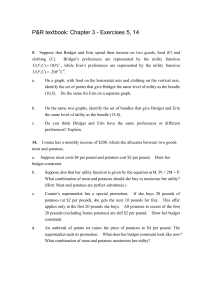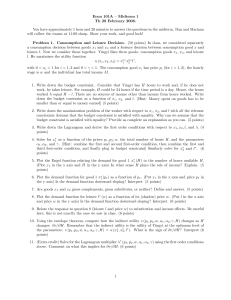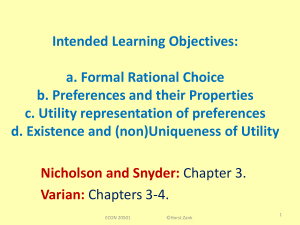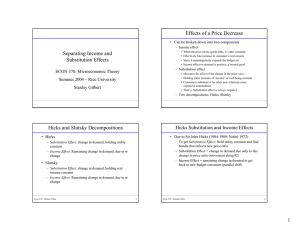Econ 387: Assignment 1 David Andolfatto January 2006
advertisement
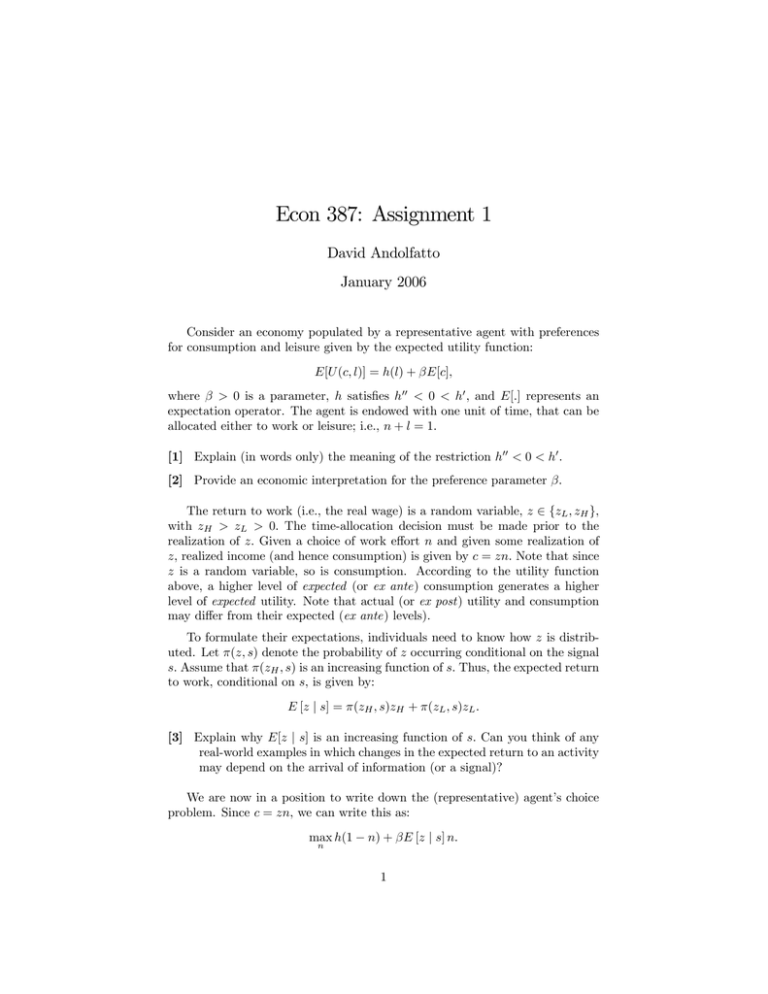
Econ 387: Assignment 1
David Andolfatto
January 2006
Consider an economy populated by a representative agent with preferences
for consumption and leisure given by the expected utility function:
E[U (c, l)] = h(l) + βE[c],
where β > 0 is a parameter, h satisfies h00 < 0 < h0 , and E[.] represents an
expectation operator. The agent is endowed with one unit of time, that can be
allocated either to work or leisure; i.e., n + l = 1.
[1] Explain (in words only) the meaning of the restriction h00 < 0 < h0 .
[2] Provide an economic interpretation for the preference parameter β.
The return to work (i.e., the real wage) is a random variable, z ∈ {zL , zH },
with zH > zL > 0. The time-allocation decision must be made prior to the
realization of z. Given a choice of work effort n and given some realization of
z, realized income (and hence consumption) is given by c = zn. Note that since
z is a random variable, so is consumption. According to the utility function
above, a higher level of expected (or ex ante) consumption generates a higher
level of expected utility. Note that actual (or ex post) utility and consumption
may differ from their expected (ex ante) levels).
To formulate their expectations, individuals need to know how z is distributed. Let π(z, s) denote the probability of z occurring conditional on the signal
s. Assume that π(zH , s) is an increasing function of s. Thus, the expected return
to work, conditional on s, is given by:
E [z | s] = π(zH , s)zH + π(zL , s)zL .
[3] Explain why E[z | s] is an increasing function of s. Can you think of any
real-world examples in which changes in the expected return to an activity
may depend on the arrival of information (or a signal)?
We are now in a position to write down the (representative) agent’s choice
problem. Since c = zn, we can write this as:
max h(1 − n) + βE [z | s] n.
n
1
The first-order condition characterizing the optimal (and in this case, equilibrium) level of employment n∗ (s) is given by:
h0 (1 − n∗ ) = βE [z | s] .
The left-hand-side (LHS) above measures the marginal utility cost of employment (i.e., in the form of foregone leisure); while the RHS measures the marginal
utility benefit of employment (i.e., in the form of expected consumption).
[5] From what you learned in Econ 331 (math econ), you should be able to
derive the comparative static dn∗ /ds. Provide an economic interpretation.
Do you think that (exogenous) fluctuations in s may be a plausible source
of business cycle behavior? Explain. Is there a a potential role for a
government stabilization policy in this world? Explain.
[6] Find an expression for dn∗ /dβ and provide an economic interpretation. Do
you think that fluctuations in β may be a plausible source of business cycle
behavior? Explain.
2




